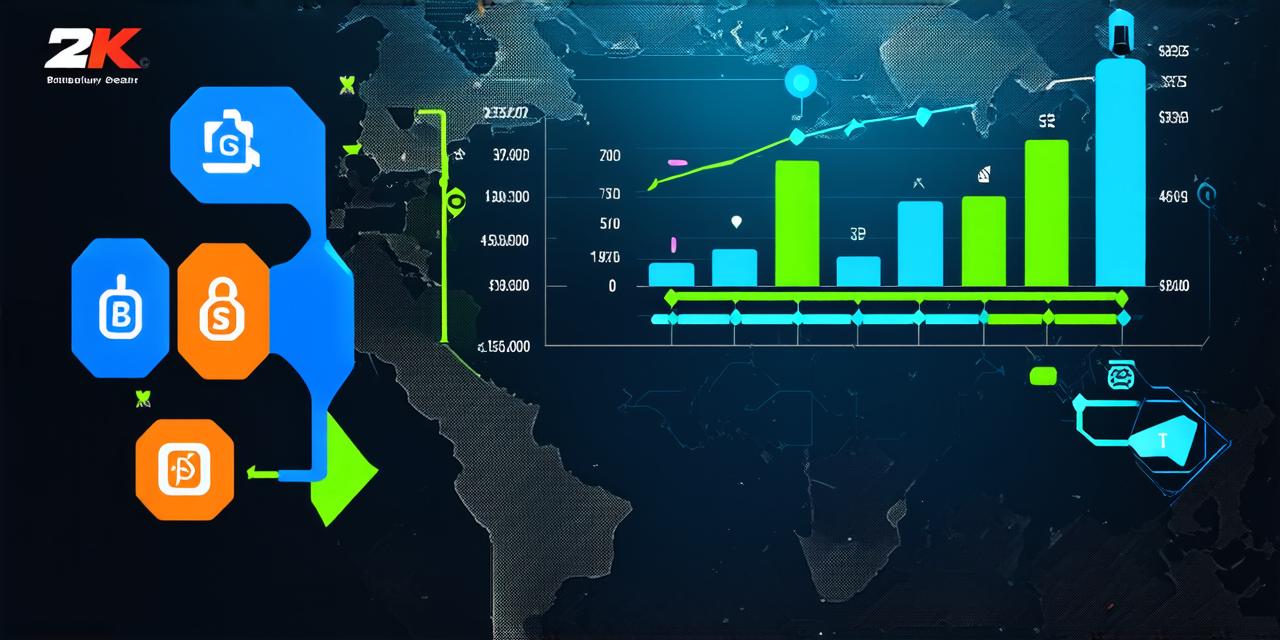Blockchain technology is gaining widespread attention in various industries due to its potential to revolutionize data storage and transfer. It’s a decentralized, secure, and transparent system that allows secure storage of data without intermediaries.
Introduction: Understanding Blockchain
Blockchain is a distributed ledger technology that enables secure and transparent transactions without intermediaries. It’s a decentralized system where each participant has a copy of the entire database, and changes are recorded on a shared digital ledger. The data in a blockchain is encrypted, making it tamper-proof, which ensures its integrity and security.
One of the most significant advantages of blockchain technology is that it eliminates the need for intermediaries, such as banks or governments, to facilitate transactions. This reduces costs and increases efficiency, making it an attractive option for various industries.
Blockchain works diagram: An overview
A blockchain consists of a series of blocks that contain data about transactions. Each block is linked to the previous one with a cryptographic hash function, which ensures that once a block is added to the chain, it cannot be changed or deleted. This creates an immutable and tamper-proof record of all transactions in the network.
A blockchain has several components that work together to create a secure and transparent system:
- Nodes: These are computers or devices that participate in the network by maintaining a copy of the ledger and processing transactions. Nodes can be categorized into two types: full nodes and lightweight nodes. Full nodes have the entire database, while lightweight nodes only store a subset of the data.
- Transactions: These are exchanges of value between participants in the network. Transactions can be in the form of cryptocurrencies or other assets.
- Mining: This is the process by which new blocks are added to the chain. Miners use powerful computers to solve complex mathematical problems and add new blocks to the chain. They are rewarded with newly minted tokens for their contribution to the network.
- Smart contracts: These are self-executing programs that automate transactions on the blockchain. They can be programmed to execute a specific set of instructions when certain conditions are met, making it possible to create complex financial instruments and other applications.
Blockchain works diagram: A step-by-step guide

Let’s take a closer look at how a blockchain works diagram, using a simple example: Alice wants to send some cryptocurrency to Bob. The process involves the following steps:
- Alice initiates a transaction by sending her public key to Bob. This allows Bob to verify that Alice is who she claims to be and has the necessary funds to send.
- Alice signs a message with her private key, which confirms that she wants to send the cryptocurrency to Bob. The message includes the amount of currency to be sent and other transaction details.
- Alice broadcasts the message to the network, requesting that it be added to the blockchain.
- Miners in the network compete to solve a complex mathematical problem. Once they do, they add a new block to the chain, containing the transaction data.
- Bob receives the message and verifies that Alice has signed it with her private key. He also checks that the funds have been deducted from Alice’s account.
- Bob adds his public key to the blockchain, confirming that he received the cryptocurrency.
The process of adding new blocks to the chain is known as mining. Miners compete to solve complex mathematical problems and add new blocks to the chain. They are rewarded with newly minted tokens for their contribution to the network. This incentivizes them to continue contributing to the network, ensuring that it remains secure and efficient.Blockchain works diagram: Real-life examples
Blockchain technology has been used in various industries, including finance, healthcare, and supply chain management. Here are some real-life examples of how blockchain works diagram:
- Cryptocurrency: Bitcoin is the most well-known cryptocurrency, but there are hundreds of others, such as Ethereum, Ripple, and Litecoin. These digital currencies use blockchain technology to enable peer-to-peer transactions without intermediaries, making it possible to send and receive money quickly and securely.
- Supply chain management: Blockchain technology has been used in supply chain management to increase transparency and traceability of goods. For example, Walmart uses blockchain technology to track food products from farm to shelf, ensuring that they are safe for consumption.
- Healthcare: Blockchain technology has the potential to revolutionize healthcare by enabling secure and transparent sharing of patient data. This can improve patient outcomes and reduce costs by eliminating intermediaries, such as insurance companies and pharmaceutical companies.
- Voting systems: Blockchain technology can be used to create secure and transparent voting systems that cannot be tampered with or manipulated. This can increase trust in the electoral process and reduce the risk of fraud.
Blockchain works diagram: Challenges and limitations
While blockchain technology is promising, it also has several challenges and limitations that need to be addressed. Here are some of the most significant ones:
- Scalability: Blockchain networks can become slow and expensive to operate as they grow in size. This can limit their use in industries with high transaction volumes, such as finance and healthcare.
- Regulation: Governments and regulatory bodies need to establish clear guidelines for blockchain technology to ensure that it is used responsibly and ethically.
- Privacy: Blockchain technology can be used to create public ledgers of personal data, which can raise privacy concerns. This needs to be addressed by developing privacy-enhancing technologies, such as zero-knowledge proofs.
- Security: While blockchain technology is secure, it’s not immune to attacks. There have been several high-profile hacks of blockchain networks, which have led to the loss of millions of dollars worth of cryptocurrency.
Blockchain works diagram: Summary
In conclusion, blockchain technology has the potential to revolutionize data storage and transfer by enabling decentralized and transparent systems that eliminate intermediaries. The blockchain works diagram shows how a network operates, including nodes, transactions, mining, smart contracts, and more. Real-life examples illustrate how blockchain technology is being used in various industries, such as finance, healthcare, and supply chain management. However, blockchain technology also has several challenges and limitations that need to be addressed to ensure its widespread adoption. With continued innovation and development, blockchain technology can become a powerful tool for businesses and individuals alike.
